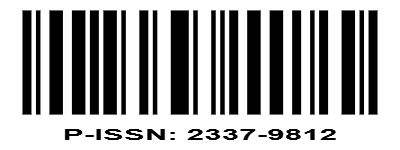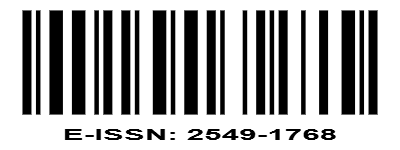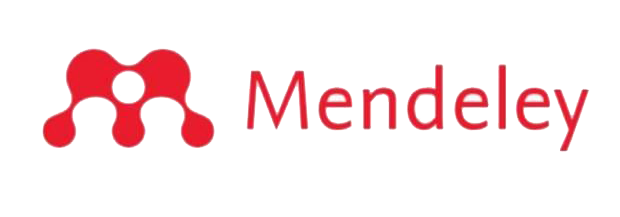ECTOMYCORRHIZAL MUSHROOMS DIVERSITY IN SORAYA RESEARCH STATION LEUSER ECOSYSTEM
DOI:
https://doi.org/10.22373/biotik.v11i2.19268Keywords:
Diversity, Ectomycorrhizal mushrooms, Leuser Ecosystem, Soraya Research StationAbstract
Ectomycorrhizal macro fungi have a mutualistic symbiosis with several plants, including those from the Dipterocarpaceae, Myrtaceae, and Fagaceae families. The existence of ectomycorrhizal macro fungi in nature is very important to preserve, therefore this study was conducted to determine the diversity of ectomycorrhizal macro fungi at Soraya Research Station. This study aims to determine the diversity of ectomycorrhizal macro fungi at the Soraya Research Stasiun Subulussalam, Leuser Ecosystem Area. The study was conducted from August 2021 to January 2022. The research method used is an exploratory survey, sampling using the squared method, using a permanent phenological plot of 20 plots measuring 20 m x 20 m, which are randomly placed in the secondary forest of the Soraya Research Station. The results obtained consisted of 5 orders, 14 families, 31 species, and 1440 individual numbers of ectomycorrhizal macro fungi. The most numerous species are obtained from the Boletaceae family, which is 5 species, and the Russulaceae family is 4 species. The ectomycorrhizal macro fungi species diversity index is relatively moderate at 2,997.Downloads
References
Allen, M. F., Swenson, W, Querejeta, J. J., Warburton, L. M. E., Treseder, K. K. 2003. Ecology of mycorrhizae: A conceptual framework for complex interactions among plants and fungi. Annu Rev Phytopathol. 41:271-303.
Baghel, R. K., Sharma, R., & Pandey, A. K. 2009. Activity of acid phosphatase in the ectomycorrhizal fungus Chantarellus tropicalis under controlled conditions. J Trop For Sci. 21(3):218-222.
Bechem, E. E. T., & Alexander, I. J. 2012. Phosphorus nutrition of ectomycorrhizal Gnetum africanum plantlets from Cameroon. Plant Soil 353:379- 393.
Brundrett, M., N., Bougher, B., Dell, T., Grove & N. Malajzuk. 1996. Working with Mycorrhyzas Fungi in Forestry and Agriculture. ACIAR Monograph, Australia.
Chiron, G.R., Guiard, J., & van den Berg, C. 2012. Phylogenetic relationships in Brazilian Pleurothallis sensu lato (Pleurothallidinae, Orchidaceae): Evidence from nuclear ITS rDNA sequences. Phytotaxa, 46(3): 34–58.
Darwo, D., & Sugiarti, S. 2008. Beberapa Jenis Cendawan Ektomikoriza Di Kawasan Hutan Sipirok, Tongkoh, Dan Aek Nauli, Sumatera Utara. Jurnal Penelitian Hutan dan Konservasi Alam, 5(2), 157-173.
Dell, B. 2002. Role of mycorrhiza fungi in ecosystems. CMU J. 1:47-55.
Dighton, J. 2003. Fungi in Ecosystem Processes. Marcel Dekker Inc, New York.
Dunabeitia, M. K., Hormilla, S., Garcia, J. I., Txarterina, K., Arteche, U., & Becerril, J.M. 2004. Differential responses of three fungal species to environmental factors and their role in the mycorrhization of Pinus radiate D. Don. Mycorrhiza. 14:11-18.
Griffiths, M. 2020 Saving Asia’s Last Great Wilderness The Leuser Ecosystem Aceh, Sumatra, Indonesia. San Francisco California, Global Conservation.
Hawksworth, D. L., & Lucking, R. 2017. Fungal diversity revisited: 2.2 to 3.8 million species. Microbiology Spectrum. 5.(79).
Hermawan, R., Imaningsih W., & Badruzsaufari. 2020. Mushrooms Assumed as Ectomycorrhizal Fungi on South Kalimantan Serpentine Soil. Jurnal Mikologi Indonesia. 4(1): 149- 155.
Iqbar, I. 2018. Keanekaragaman Tumbuhan Berhabitus Pohon di Stasiun Soraya Ekosistem Leuser. Prosiding Biotik, 3 (1).
Jonnarth, U.A., Roitto, M., Markkola, A.M., Ranta, H., & Neuvonen, S. 2004. Effects of nickel and copper on growth and mycorrhiza of Scots pine seedlings inoculated with Gremmeniella abietina. For Path. 34:337-348.
Kandikere, R. S., & Namera C. K. 2019. Diversity and Ecology of EctomycorrhizalFungi in the Western Ghats, Microbial Interventions in Agriculture and Environment. (479-506).
Karmilasanti & Maharani, R. 2016. Diversity of Ectomycorrhizal Fungi in Dipterocarp Forest Ecosystems in Labanan Research Forest, Berau, East Kalimantan. Jurnal Penelitian Ekosistem Dipterokarpa, 2, 57-66.
Largent, D. 1973. How To Identify Mushrooms To Genus I: Macroscopic Features. Mad River Press.Inc, Route.Eureka California.
Lee, S.S., Alias, S.A., Jones, E.G.B., Zainuddin, N. & Chan, H.T. 2012. Checklist of Fungi of Malaysia. Research Pamphlet, Malaysia.
LIPI. 2019. Status Keanekaragaman Hayati Indonesia: Kekayaan Jenis Tumbuhan dan Jamur Indonesia. Ed: Retnowati, A, Rugayah, Rahajoe, J.S, dan Arifiani, D.LIPI Press, Jakarta.
Ludwig, J.A., & Reynold, J.F. 1988. Statistical Ecology. A Primer on Method and Computing. John Wiley & Sons, New York (US).
Noverita, Sinaga & Setia. 2017. Jamur Makro Berpotensi Pangan dan Obat di Kawasan Cagar Alam Lembah Anai dan Cagar Alam Batang Palupuh Sumatera. Jurnal Mikologi Indonesia, 1(1): 28–37.
Onguene, N.A., & Kuyper, T. W. 2002. Importance of ectomycorrhiza network for seedling survival and ectomycorrhiza formation in rain forest of South Cameroon. Mycorrhiza. 12 (1):13-17.
Rahmadani, A. 2019. Karakteristik Jamur Makroskopis di Stasiun Penelitian Soraya Kawasan Ekosistem Leuser sebagai Media Pembelajaran pada Materi Fungi (Skripsi), UIN Ar-Raniry, Banda Aceh.
Ratna, W., Noverita, & Tatang, M.S. 2019. Keanekaragaman Jamur Makroskopis Di Beberapa Habitat Kawasan Taman Nasional Baluran, Al-Kauniyah: Jurnal Biologi, 12(2) : 171-180.
Sari, P. 1999. Inventarisasi jenis-jenis jamur kayu di areal stasiun riset soraya ekosistem leuser (Skripsi).Universitas Syiah Kuala, Banda Aceh.`
Solem, J. 2011. Fungi and Slime Molds of Howard County. John Wiley and Sons, Inc, New York.
Ulfa, M., Faridah, E., Lee, S. S., Sumardi, Roux, C., Galiana, A., Mansor, P., & Ducousso, M. 2019. Multi-Host of Ectomycorrhizal Fungi on Dipterocarpaceae in Tropical Rain Forests. Jurnal Ilmu Kehutanan, 13, 56-69.
Whipss, J. M. 2004. Prospects and limitations for mycorrhizas in biocontrol of root pathogens. Can J Bot. 82:1198-1227.
Downloads
Published
Issue
Section
License
Copyright (c) 2023 Ayu Rahmadani, Saida Rasnovi, Yulia Sari Ismail

This work is licensed under a Creative Commons Attribution-ShareAlike 4.0 International License.
Authors who publish with BIOTIK: Jurnal Ilmiah Biologi Teknologi dan Kependidikan agree to the following terms:
- Authors retain copyright and grant the journal right of first publication with the work simultaneously licensed under a Creative Commons Attribution License that allows others to share the work with an acknowledgement of the work's authorship and initial publication in this journal.
- Authors are able to enter into separate, additional contractual arrangements for the non-exclusive distribution of the journal's published version of the work (e.g., post it to an institutional repository or publish it in a book), with an acknowledgement of its initial publication in this journal.
- Authors are permitted and encouraged to post their work online (e.g., in institutional repositories or on their website) prior to and during the submission process, as it can lead to productive exchanges, as well as earlier and greater citation of published work.











